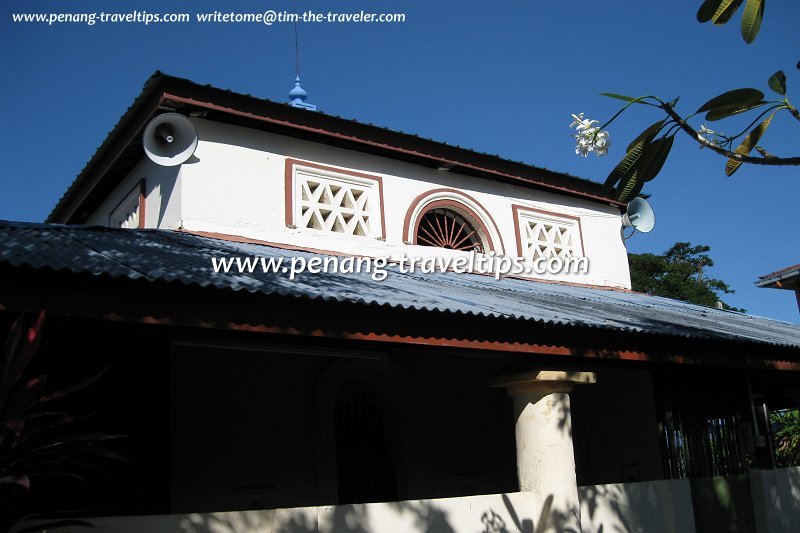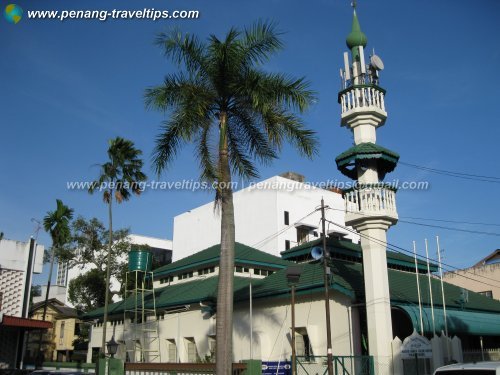Penang Malays today forms the second biggest ethnic group in Penang. In the latest statistics of 2011, as reported by the Department of Statistics (The Star, 4 August 2011), there are 636,136 Malays in Penang in 2011. This is a decline of 18,164 from the figure released for 2009, which is 654,300.
The Malays became the majority ethnic group in Penang in 2009, for the first time in recent history, when they surpassed the Chinese. However, the latest figures for 2010 shows that the Chinese is once again the majority in Penang, accouting for 670,400 of Penang's 1.5 million population, and 2.2% more than the Malays for 2010.
The Malay population in Penang has over the past decade narrowed the gap with the Chinese. A variety of reasons contribute to the growing percentage of Malays in Penang compared to the Chinese, among them the fewer number of children per Chinese family, the lower marriage age of Malay couples compared to Chinese couples, the reluctance of Chinese couples to have more children, the migration of Malays from the less developed states to Penang, the migration of Chinese from Penang to other cities such as Kuala Lumpur, as well as to overseas destinations such as Singapore and Australia, and non-pure-breed Malays such as Indian Muslims and Indonesians often passing themselves as Malays.

Masjid Haji Kassim (15 December 2008)

Despite being the majority of the Penang population today, the Malays have a mean income that is substantially lower than the Chinese, a fact that has not escaped many Malay politicians. Apart from a small minority who are able to get government contracts, the majority of the Malays are in the lower income group.
The Malays in Penang trace their roots to different groups who arrived before and after Francis Light established Penang. Even before George Town was founded, there were already Malay (and Chinese) villages in different parts of Penang, including Batu Uban and Bayan Lepas.
 Masjid Jamek Batu Uban (22 September 2009)
Masjid Jamek Batu Uban (22 September 2009)
Descendants of Penang Malays
The Penang Malays trace their roots various sources. The majority are descended from the Kingdom of Kedah, which ruled Penang Island before the arrival of the British. They established riverine and estuarine villages as fishermen. They lived along the estuaries of rivers such as Sungai Pinang.Apart from the fishermen, there is a second group of Kedah Malays who migrated to Penang in the last two hundred and fifty years. They include those who were banished from Kedah for having a fall-out with the sultan as well as those who fled Kedah in the 19th century, along with the sultan, when the state was conquered by Siamese.

Date palms, Masjid Jamek Jalan Hatin (9 December 2008)

The Kedah Malays contributed to the Malay dialect used in Penang, which has close similarities with the Malay spoken in the state. Kedah Malays are however not the only Muslims in Penang who now claim themselves to be Penang Malays. There are substantial numbers of Muslims from different part of Sumatra, particularly Acheh, who moved to Penang before and after the arrival of Francis Light. They include those who settled in Batu Uban, establishing the Batu Uban Jamek Mosque, in the mid 18th century, and those who arrived from Acheh with their leader, Syed Hussain Al-Aidid, who established the Acheen Street Mosque, also called the Malay Mosque.
A third group comprises Indian Muslims from south India, particularly the Coromandel Coast (the stretch of coast from present-day Andhra Pradesh to Tamil Nadu) and Malabar Coast (in present-day northern Kerala). They were the predominant community in places such as Chulia Street, Kampung Malabar, Hutton Lane, Transfer Road and Penang Road, from the founding of Penang Island until around the third quarter of the 19th century.
Intermarriage between the various Muslim ethnic groups have blurred the purity of each group, but for obvious economic and political reasons, have today regarded themselves as Bumiputra.

Copyright © 2003-2025 Timothy Tye. All Rights Reserved.

 Go Back
Go Back